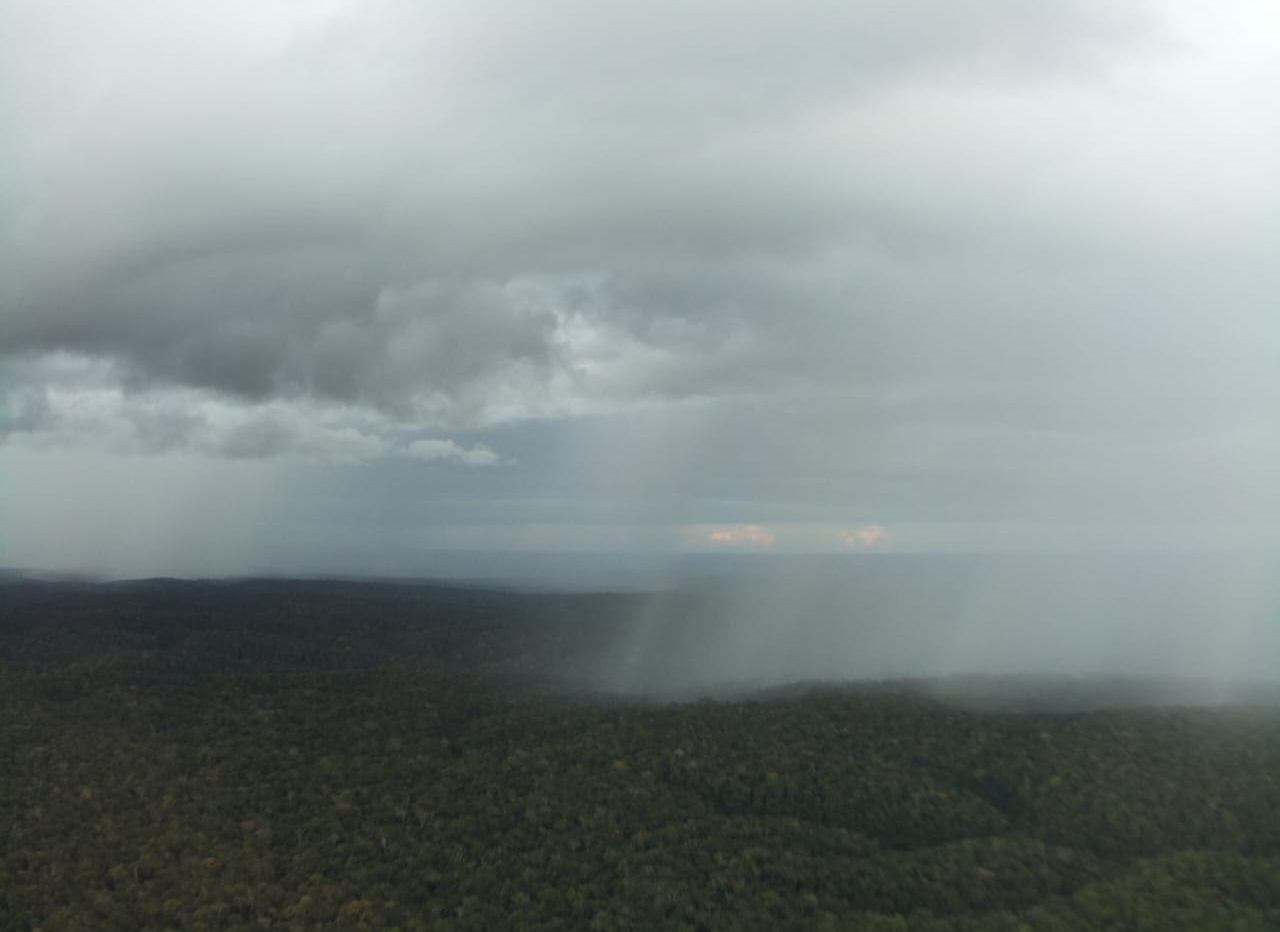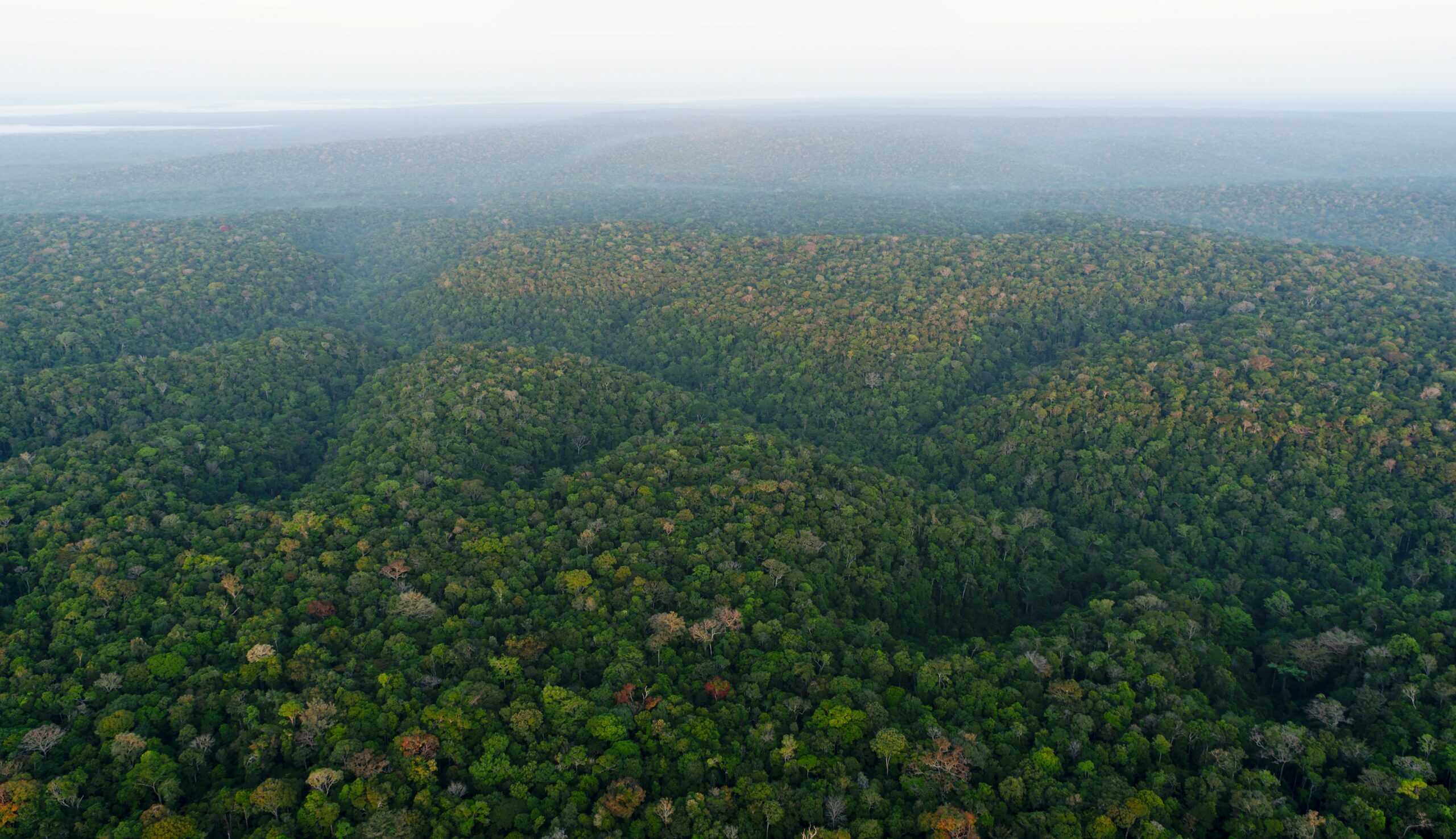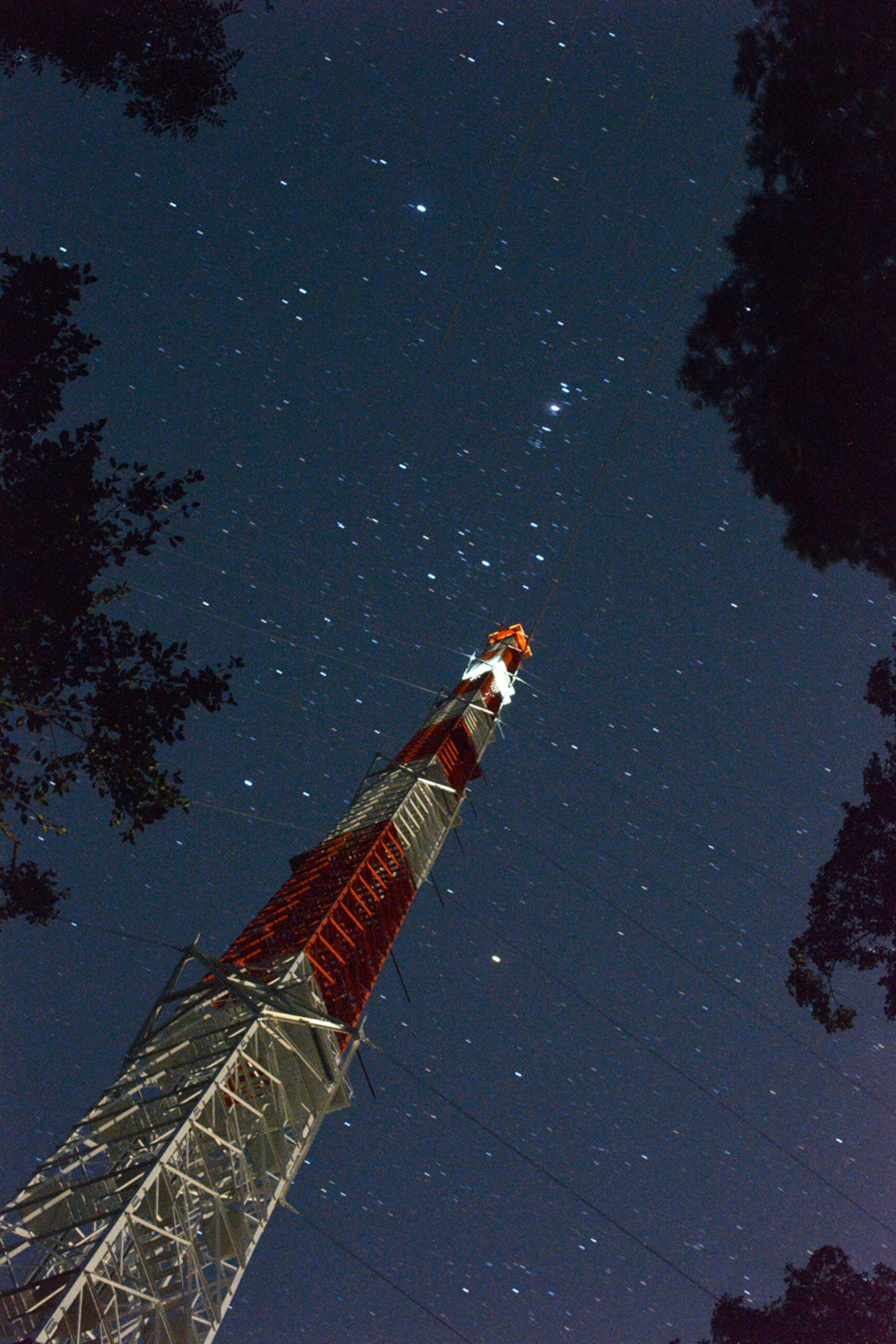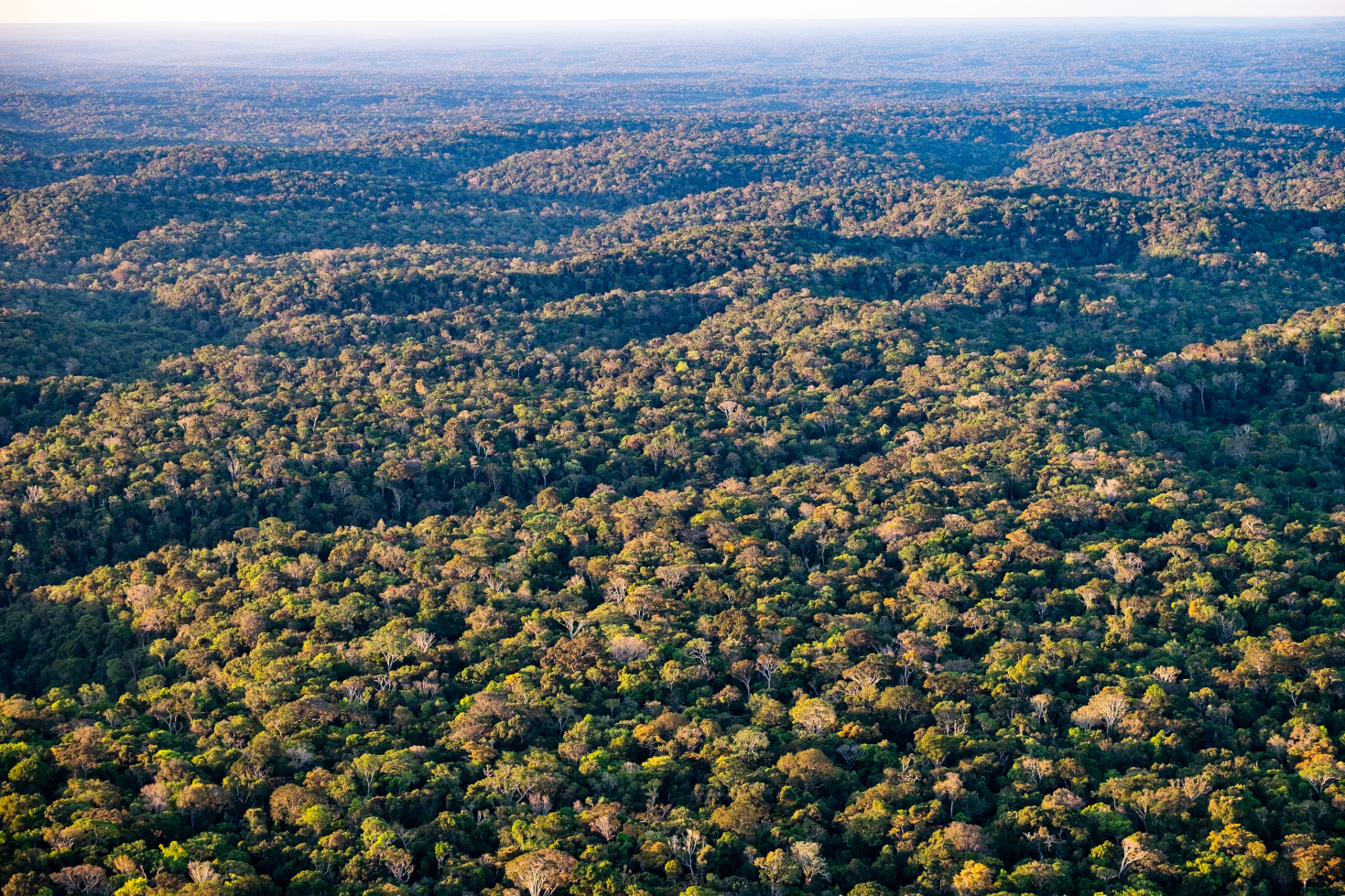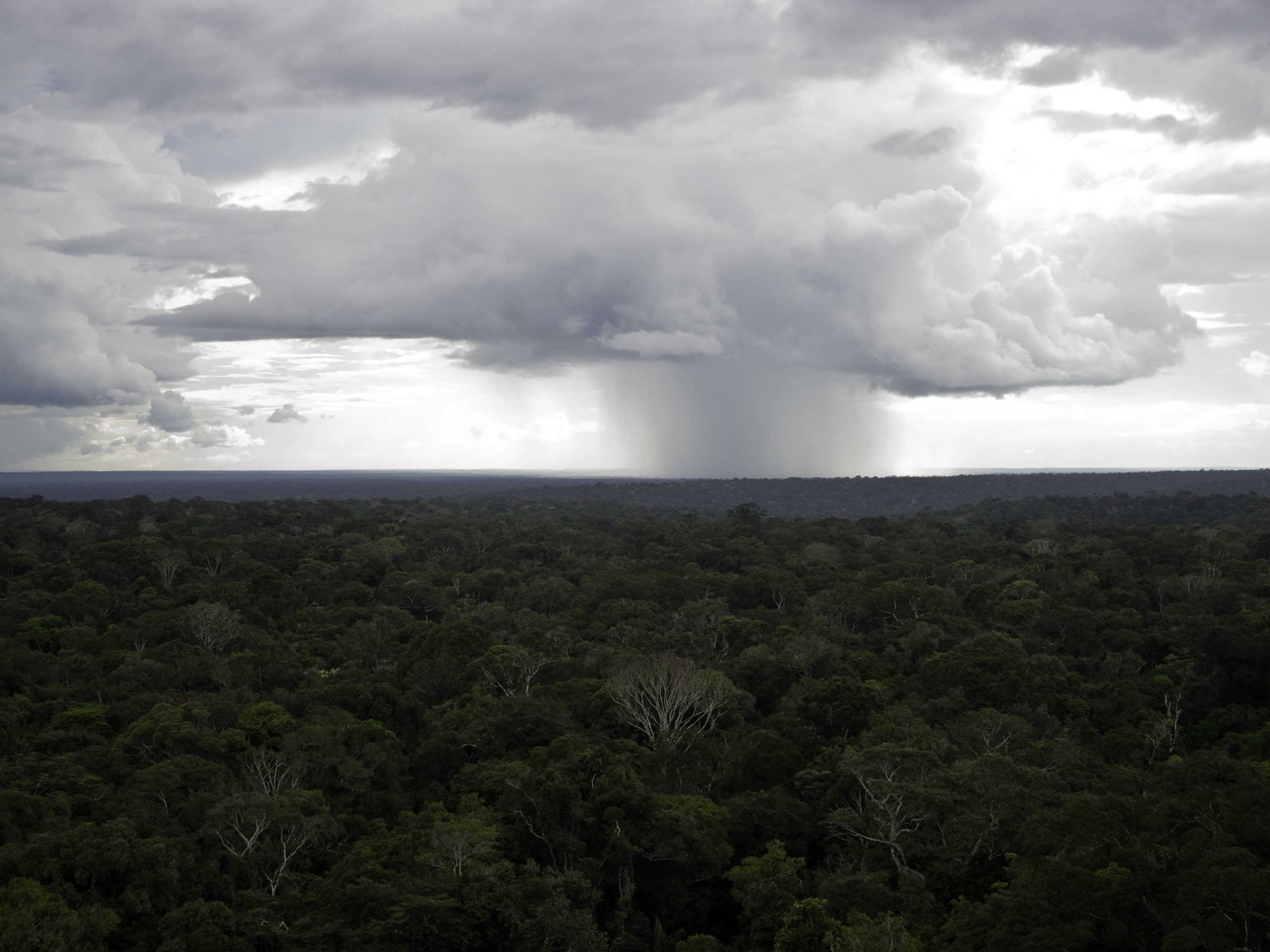Understanding and quantifying the interactions between the forest and the atmosphere is one of the main tasks at ATTO. We are looking at the exchange of gases, particles and energy. This includes studying the chemistry of the atmosphere, and the ecology and biology of the plants in the rainforest. But it crucially also includes another component not quite so obvious. Only when the air inside of the forest canopy mixes with the air above can there be exchange. The physical movement of the air, its turbulence, determine how well these two layers of air, the one inside the forest canopy and the one above, mix. This is a field of research that has been studied for decades. But it is especially complicated above such complex and heterogeneous terrains such as a rainforest canopy. Hence, many questions remain unanswered.
Daniela Cava, Luca Mortarini, Cleo Quaresma and their colleagues set out to address some of these questions with two new studies that they conducted at ATTO. They wanted to define the different regimes of atmospheric turbulence or stability (Part 1) and describe the spatial and temporal scales of turbulent structures (Part 2).
For this, they used meteorological data obtained during the wet season 2015. Specifically, they looked at wind speed, air temperature and CO2 concentration. There were measured both at the 80-m tower and at the tall tower. Observing the changes in these parameters over several days, they were able to observe varying stages of atmospheric turbulence.
Based on these measurements, in Part 1 the scientists defined five different stability regimes, each with a different set of characteristics:
- Intense winds and significant heat and momentum flux characterize the unstable regime
- Strong turbulence but very small fluxes of heat and CO2 characterize the near neural regime
- Strong turbulence above the canopy, but very stable values of heat, momentum and CO2 characterize the weakly stable regime
- Weak winds and little turbulence characterize the very stable regime
- Even less wind and negligible turbulence characterize the super stable regime
In near neutral and unstable conditions coherent structures of turbulence propagate up to 2–3 times the canopy height. It also penetrates into the lowest part of the forest in sweeps. In these stability regimes, the mixing between the air within the forest canopy and the air above works really well, enabling all those exchange processes. That means that gases and particles produced in the forest, such as BVOCs and pollen, can up into the air above the forest. There they contribute to chemical processes and take part in cloud formation. On the other hand, through sweeping motions the gases and particles from above can get into the forest, for example bringing nutrients.
In weakly stable and very stable conditions, there is some mixing taking place. But during super stable conditions, there is negligible transport from forest air to the free atmosphere and vice versa. In these conditions, the air is strongly stratified exchange only barely takes place. Identifying this super stable regime was one of the main findings of the study. In this regime, the atmosphere above and below the canopy is dominated by low-frequency, large scale processes. How these structures influence the transport and mixing of gases and particles is an open question that shall be addressed in future studies.
In Part 2, the scientists looked even more closely at their data. They developed a new method to detect the presence of coherent vortices: turbulent swirling motions that are largely responsible for the exchange of air. From this, they then derived two parameterizations to describe the spatial and temporal scales of these turbulent structures. In addition, the team used their data and analysis to check if an existing theory of atmospheric mixing could be applied to a dense forest canopy such as the Amazon rainforest. They found that this is indeed the case, with some smaller limitations, in all stability conditions. They demonstrated that coherent structures and hence turbulence mixing and transport are present in all stability conditions. This largely theoretic work improves our understanding of turbulent airflow above and within the forest canopy.
Both of these studies help us to describe the complex processes of air movement at the interface of biosphere and atmosphere. This will in turn allow for better representation in model simulations and hence better predictions of the future of the Amazon in a changing climate.
Cava et al. published the study “Vertical propagation of submeso and coherent structure in a tall and dense Amazon Forest in different stability conditions PART I: Flow structure within and above the roughness sublayer” in the journal Agricultural and Forest Meteorology.
Mortarini et al. published the study “Vertical propagation of submeso and coherent structure in a tall and dense amazon forest in different stability conditions. PART II: Coherent structures analysis” also in the journal Agricultural and Forest Meteorology.
Both are Closed Access, but freely available for 50 days from publication with the links provided above.
Similar articles
Direct measurements of OH radicals are rare and difficult to achieve. However, since they react with BVOCs, Ringsdorf et al. inferred them from isoprene measurements at ATTO. To do so, they applied a technique called ‘Dynamical Time Warping’ from the field of speech recognition. Akima Ringsdorf et al. published the study “Inferring the diurnal variability of OH radical concentrations over the Amazon from BVOC measurements” Open Access in Nature Scientific Reports.
In a new study, Anne Mendonça, Cléo Quaresma, Daniel Marra and their co-authors analyzed different turbulence regimes at the ZF2 site as part of the ATTO-INVENTA project. They also investigated how turbulence is connected to the occurrence of downdrafts and extreme wind gusts, that might lead to tree mortality.
In a new study, Luca Mortarini and his colleagues introduce a novel approach to the study of the roughness sublayer, using a cospectral budget model. Its originality lies in not considering the mixing layer analogy to parameterize the turbulence statistics. In addition, it relates them to the different scales of the wind velocity spectrum without making any assumption on the property of the flow.
Eiky Moraes, Cléo Dias-Júnior and their colleagues wanted to find out if the local topography at the ATTO influenced the atmospheric movements. In particular, they were interested in the effect that topography has on the formation of gravity waves. Comparing two simulations, one with and one without topography, revealed some important differences in the dynamics and chemistry of the atmosphere.
Polari Corrêa and his co-authors analyzed the atmospheric dynamics in and above the forest canopy during one particular night at ATTO. Those conditions changed throughout the night. Turbulence was followed by the formation of a gravity wave and a low-level jet. It was likely formed due to the breeze from the Uatumã River and the hilly terrain. The study highlights the complex dynamics and mechanisms in the atmosphere above a dense forest.
Chamecki and his co-authors analyzed if the gentle topography underneath the Amazon rainforest impacts atmospheric turbulence. They published their results Open Access in the Journal of the Atmospheric Science.
Convective storms often occur in the tropics and have the potential to disturb the lower part of the atmosphere. They might even improve the venting of trace gases out of the forest canopy into the atmosphere above. To better understand these processes, Maurício Oliveira and co-authors used the infrastructure at ATTO to study storm outflows during nighttime. They published the results in a new paper in the Open Access Journal Atmospheric Chemistry and Physics.
The Amazon rainforest interacts with the atmosphere by exchanging many substances. Many of these, such as carbon dioxide, methane, ozone, and organic compounds, are produced by the vegetation. They are very influential in both the regional and global climates. Until now, the estimates of their emission and absorption rates are based on classical theories. But those were developed over relatively short vegetation and are valid for the so-called “inertial sublayer.”
Aquino et al. published a new study in Agricultural and Forest Meteorology about the characteristics of turbulence within the forest canopy at two Amazonian sites. They found that the air layer close to ground is largly decouples from the air layer in the upper canopy and above.



